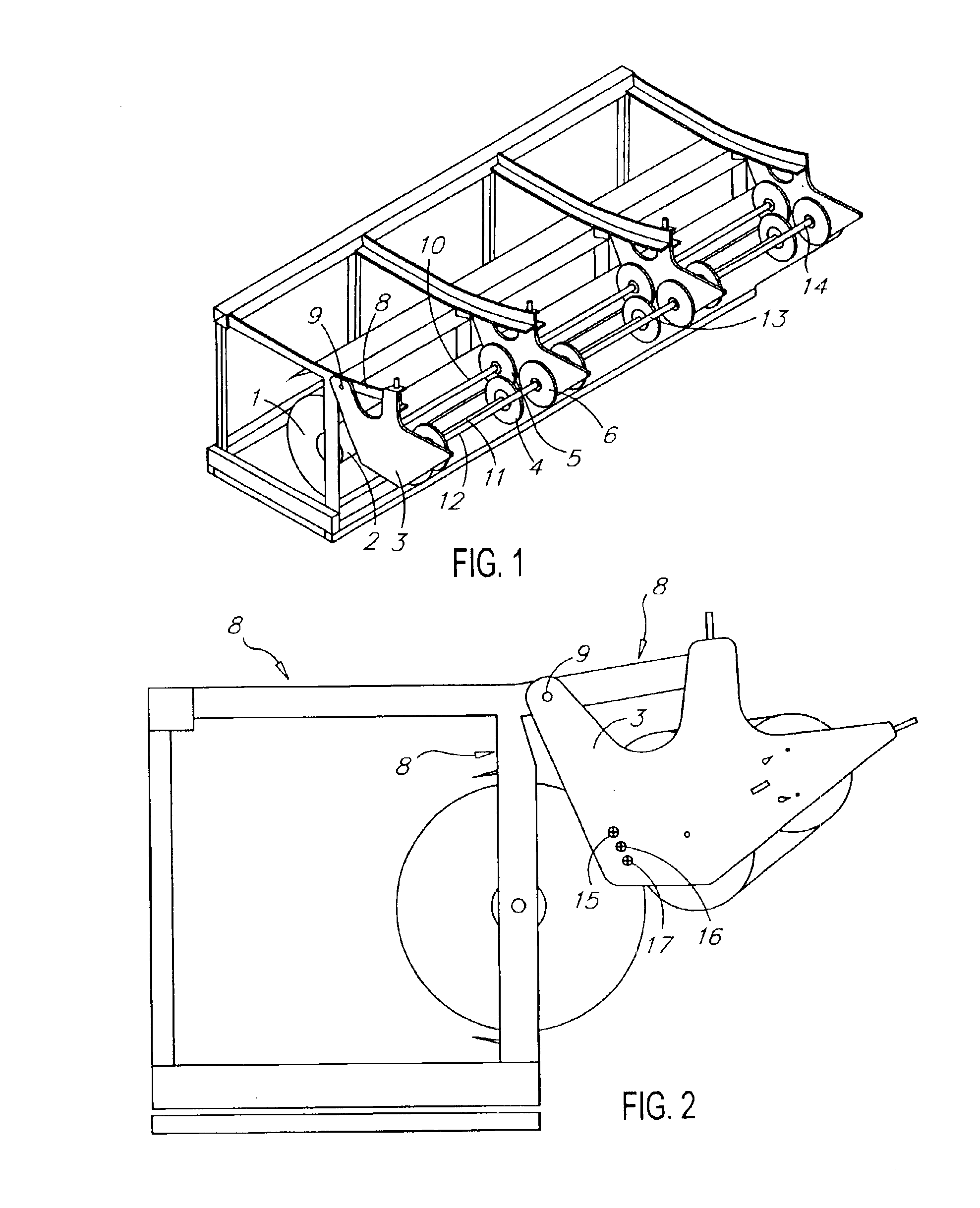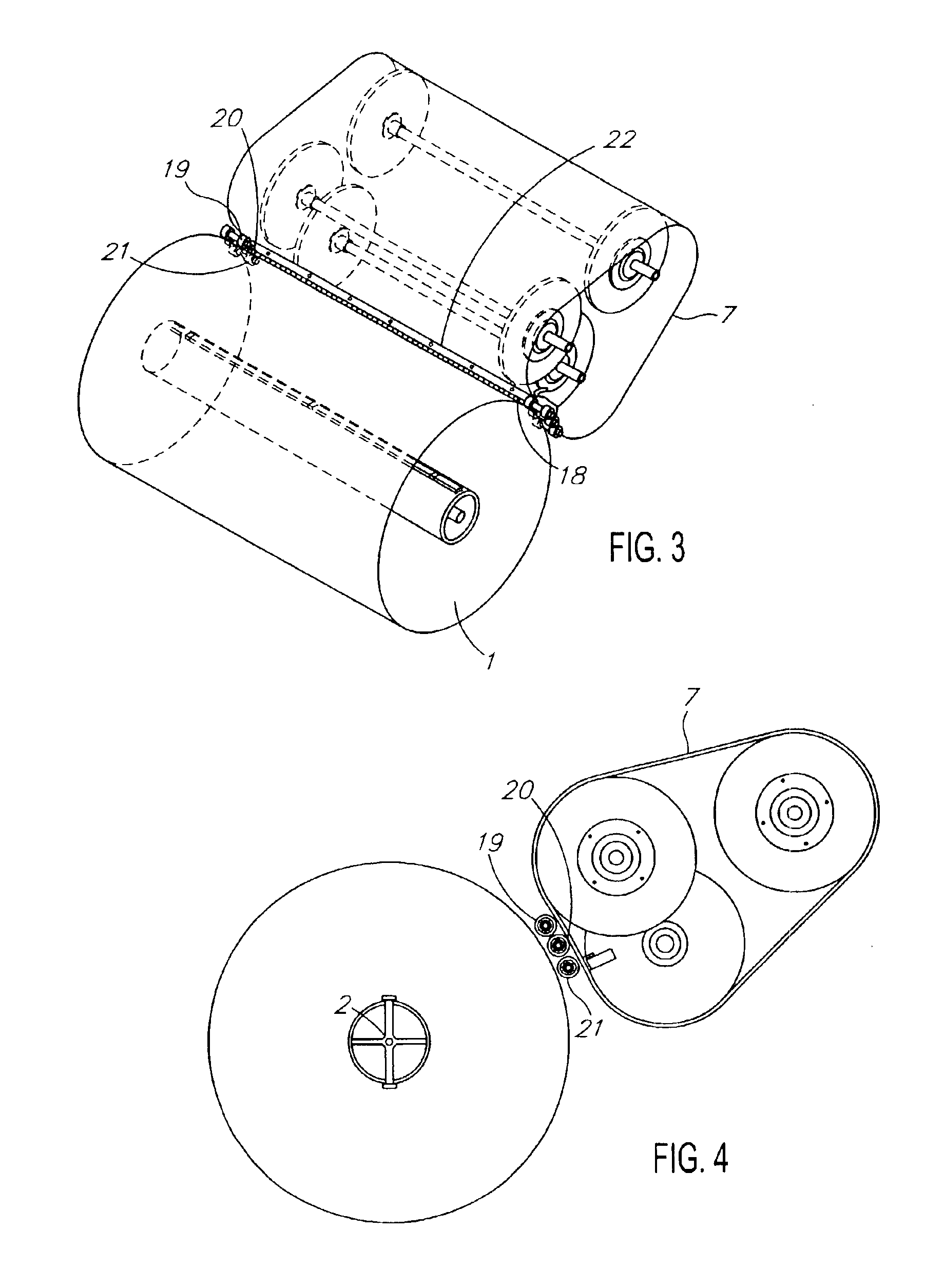Native seed harvester with cam design
a technology of cam design and seed harvester, which is applied in the direction of picking device, agriculture tools and machines, picking devices, etc., can solve the problems of affecting the yield of native vegetation, so as to achieve maximum yield
- Summary
- Abstract
- Description
- Claims
- Application Information
AI Technical Summary
Benefits of technology
Problems solved by technology
Method used
Image
Examples
Embodiment Construction
This application relates to certain improvements to the harvester described in the parent application. The improvements include: (1) an improved design for the comb assembly; (2) the addition of a cam mechanism that increases the amount of controlled brushing action given to each seed head; and (3) adjustment of the distance between the brushes and combs to achieve maximum seed recovery for a particular species. In addition, the height of the harvester is adjustable to the height of the seed heads. This latter adjustment can be made in a number of ways. In the preferred embodiment, the harvester is mounted on a front end loader, which can be raised or lowered with hydraulic controls. Other possible embodiments include raising or lowering the front end loader with electrical controls, or manufacturing the harvester as an independent pull-type unit with hydraulic or electrical height controls in the tractor cab. All of these improvements enhance the effectiveness of the harvester by i...
PUM
 Login to View More
Login to View More Abstract
Description
Claims
Application Information
 Login to View More
Login to View More - R&D
- Intellectual Property
- Life Sciences
- Materials
- Tech Scout
- Unparalleled Data Quality
- Higher Quality Content
- 60% Fewer Hallucinations
Browse by: Latest US Patents, China's latest patents, Technical Efficacy Thesaurus, Application Domain, Technology Topic, Popular Technical Reports.
© 2025 PatSnap. All rights reserved.Legal|Privacy policy|Modern Slavery Act Transparency Statement|Sitemap|About US| Contact US: help@patsnap.com



